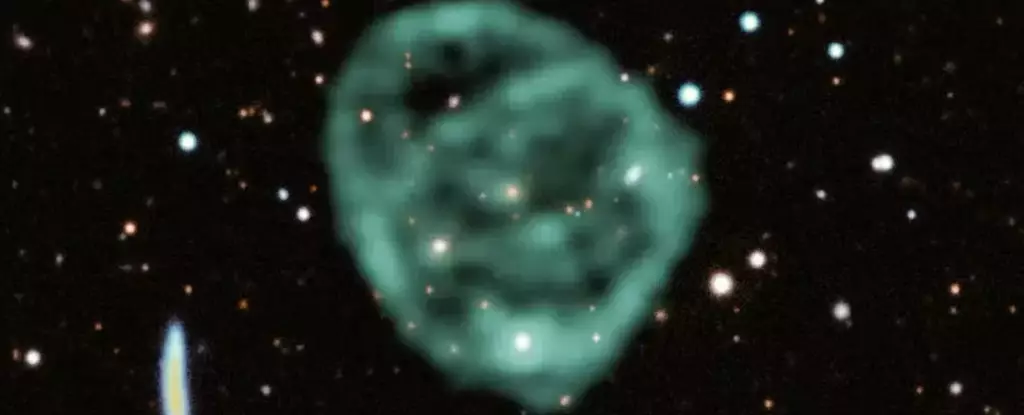In recent years, astronomers have stumbled upon a new and intriguing phenomenon known as Odd Radio Circles (ORCs). These bizarre celestial objects are on a scale larger than entire galaxies and appear as expansive rings of radio waves shockingly expanding outwards. Up until now, ORCs have only been detected in the radio wavelength spectrum. However, a groundbreaking new paper published on April 30, 2024, revealed the first-ever association of X-rays with an ORC. This discovery has shed light on the possible origins of these perplexing structures.
ORCs present a unique challenge for researchers due to their visibility primarily in radio wavelengths. Unlike other astronomical events with circular remnants, such as supernova explosions, ORCs demand a different explanation for their formation. Even simulations struggle to replicate the intense radio emissions produced by these enigmatic objects. To date, only eight ORCs have been identified surrounding known elliptical galaxies. However, not all ORCs are associated with visible galaxies, making their study even more complex.
Using the XMM-Newton telescope operated by the European Space Agency (ESA), lead author Esra Bulbul and her team observed one of the closest known ORCs dubbed the Cloverleaf. This observation revealed a striking component of X-ray emissions linked to the ORC, marking the first-time X-rays have been connected to an ORC. The X-ray data displayed heated and excited gas within the Cloverleaf, generated by the merger of two groups of galaxies totaling around a dozen entities. The gas temperature reached a scorching 15 million degrees Fahrenheit due to the merge, hinting at the chaotic nature of galactic interactions within the Cloverleaf.
Despite the insights gained from studying the X-ray emissions within the Cloverleaf, astronomers are still puzzled by the processes behind its creation. While galaxy mergers are relatively common occurrences throughout the universe, the rarity of ORCs like the Cloverleaf suggests a unique underlying mechanism. Esra Bulbul emphasized the need for further in-depth investigations utilizing both radio and X-ray telescopes to unravel the mysteries surrounding these captivating structures.
In the absence of concrete explanations, astronomers have put forth intriguing theories to explain the intense radio signals emitted by ORCs. One such hypothesis suggests that supermassive black holes residing within these galaxies might have undergone periods of extreme activity in the past. Consequently, relic electrons from these ancient events could have been reaccelerated due to the galaxy merger shockwaves, giving rise to the powerful radio emissions observed in ORCs like the Cloverleaf. This dual-phase origin story proposes a fascinating narrative that combines the effects of supermassive black holes and galactic collisions in shaping these mysterious celestial phenomena.
The discovery of X-ray emissions associated with ORCs has opened up new avenues for understanding these unusual structures. The case of the Cloverleaf serves as a compelling example of the complexities involved in deciphering the origins of ORCs within the vast expanse of the cosmos. With further research and technological advancements, astronomers hope to unlock the secrets behind these enigmatic odd radio circles, unraveling the mysteries of the universe in the process.


Leave a Reply